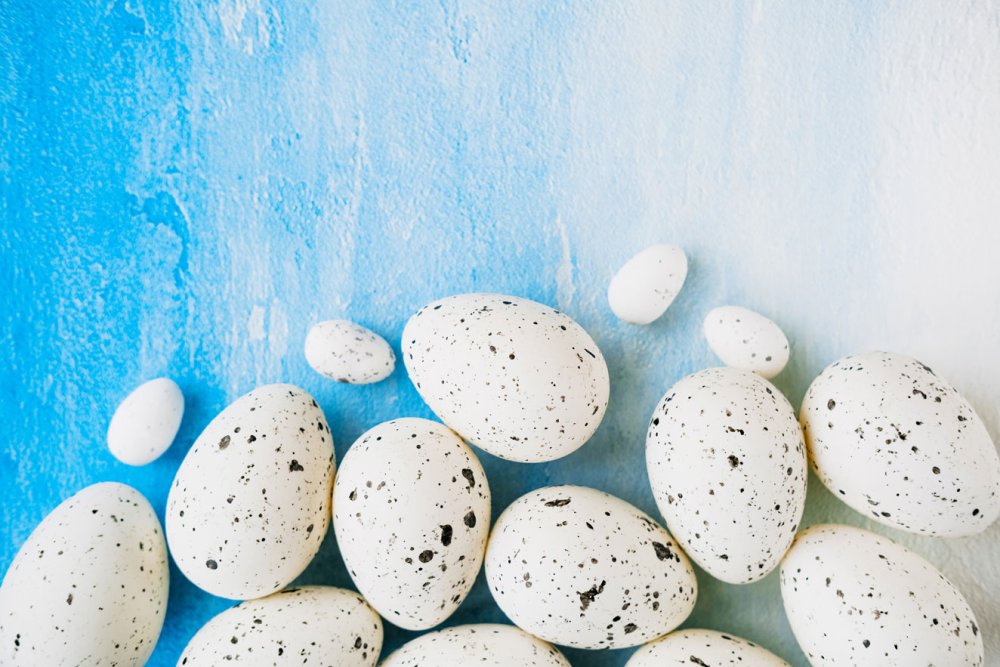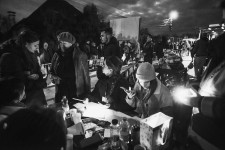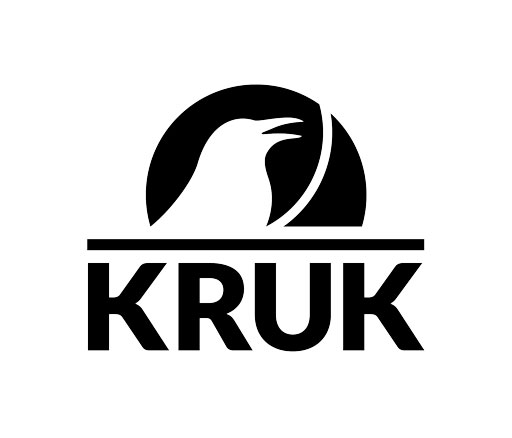If we were to apply to the tragedy in Ukraine the Eastern concept of good hiding a touch of evil, and vice versa, it has brought before our eyes a nation both unknown and admirable. An infinitesimal good in an ocean of death and destruction. We are in the position of learning about a people at the most trying moment of its history.
To all those whom history has favoured a little more in recent decades, Ukraine was somehow a vast amorphous territory, a major grain producer, with poor people, already victims of a somewhat more distant history, predominantly coloured in red. Alongside the atrocities, however, I discovered a vibrant and full-of-hope attitude towards a better future, symbolised by the combination of the two colours of the Ukrainian flag.
In between the air raids, we could see the architectural splendours of Ukraine, the courage and determination of the people, a civic spirit and patriotism that took us all by surprise, a millennial culture and a folk art full of meaning. Above all, as a corollary, the cosmopolitan, open spirit of this country, which, like Romania, is at the confluence of different cultures: Slavic, Eastern, Balkan and Western in equal measure. Far from the 'anarchy and nihilism', to quote Dostoevsky, of the Russian people, with which it has often been confused.
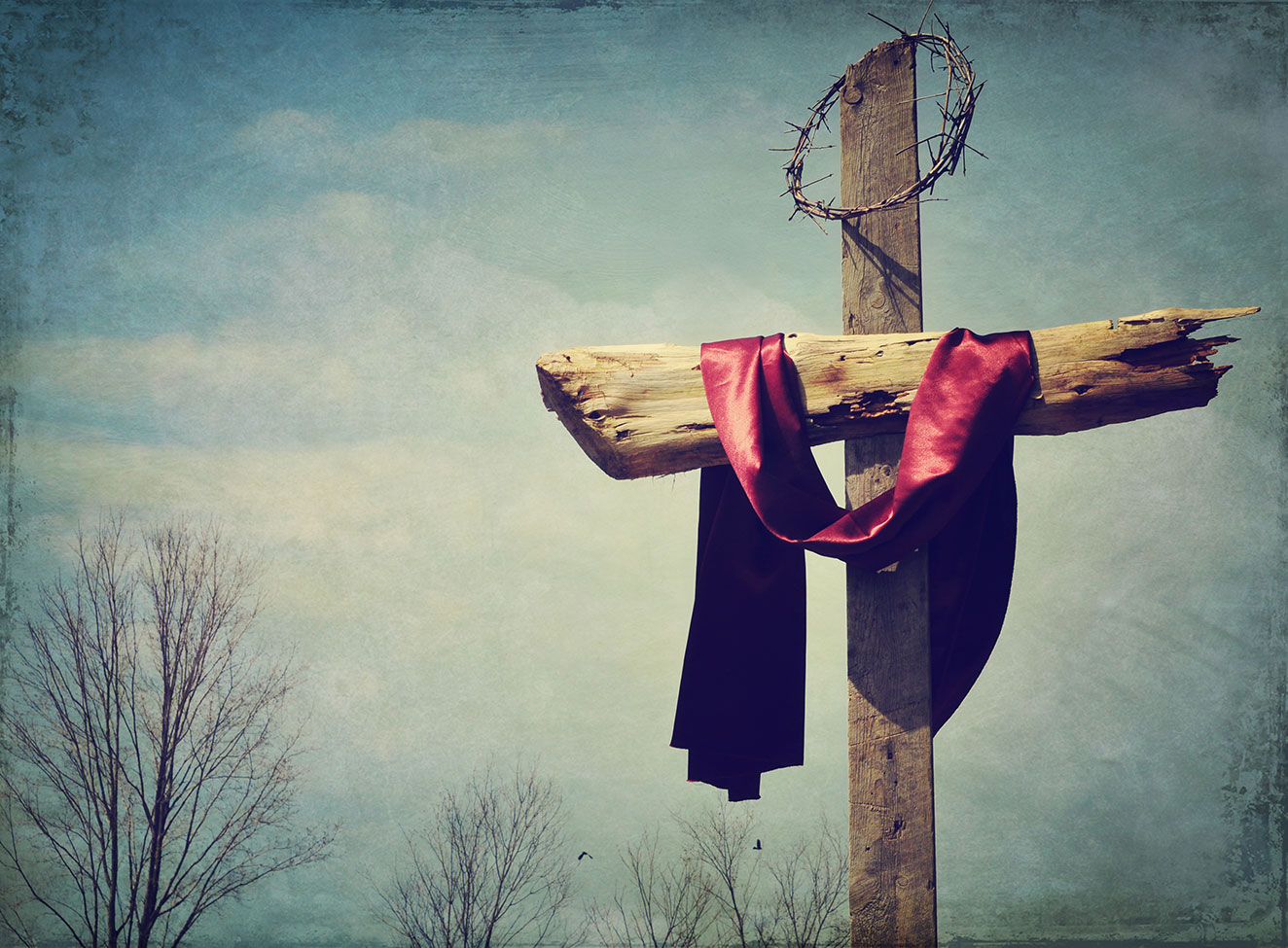
Ukrainian gastronomy is also a facet of this cosmopolitan spirit and a consequence of cultural markers stratified throughout history. There are influences from the Eastern and German worlds, but also from the West and the Mediterranean.
To a certain extent, we can say that Ukrainians eat pretty much what other peoples in the Eastern European geographical area eat. However, based on a general idea, they have developed specific dishes with certain peculiarities, different from Polish, Russian, Romanian, Moldovan, Hungarian, Slovakian, Belarusian etc. All together they form a well-defined, recognisable culinary identity.
The Easter meal in a wicker basket
In the following, I tried to summarise a kind of thick outline, from the perspective of a journalist passionate of gastronomy, in the position of not being able to experience, for the time being, what Ukrainian cuisine offers at home. And because we are in the grace period before the Christian Resurrection, I have also compiled a traditional Easter menu, adapted to contemporary requirements.
Traditionally, in today's world, this is the sum of all the influences, large or small, that have stood the test of time and entered into popular, ordinary or festive cuisine, together with everything that may have survived from the ancient cuisine that preceded these influences. A nation's cuisine is nothing more than a set of influences grafted upon an ancient local culture, which together produce a result that is unique in its own way.
When it comes to the Easter meal, the Ukrainian people take us by surprise again. We may be in error if we think of the usual traditional meal on the day of the Christian world's greatest feast. According to an ancient custom that is still practiced, Easter Day is the day when women take a kind of respite after the many activities of the previous period, but also honouring the significance of this celebration. Instead of the traditional meal, with dishes served one at a time in a certain order, the stars of Easter are the wicker/sviachenia baskets. These contain all sorts of dishes previously blessed at Saturday or even Sunday morning mass. What is certain is that at Easter even the famous borsch takes a break.
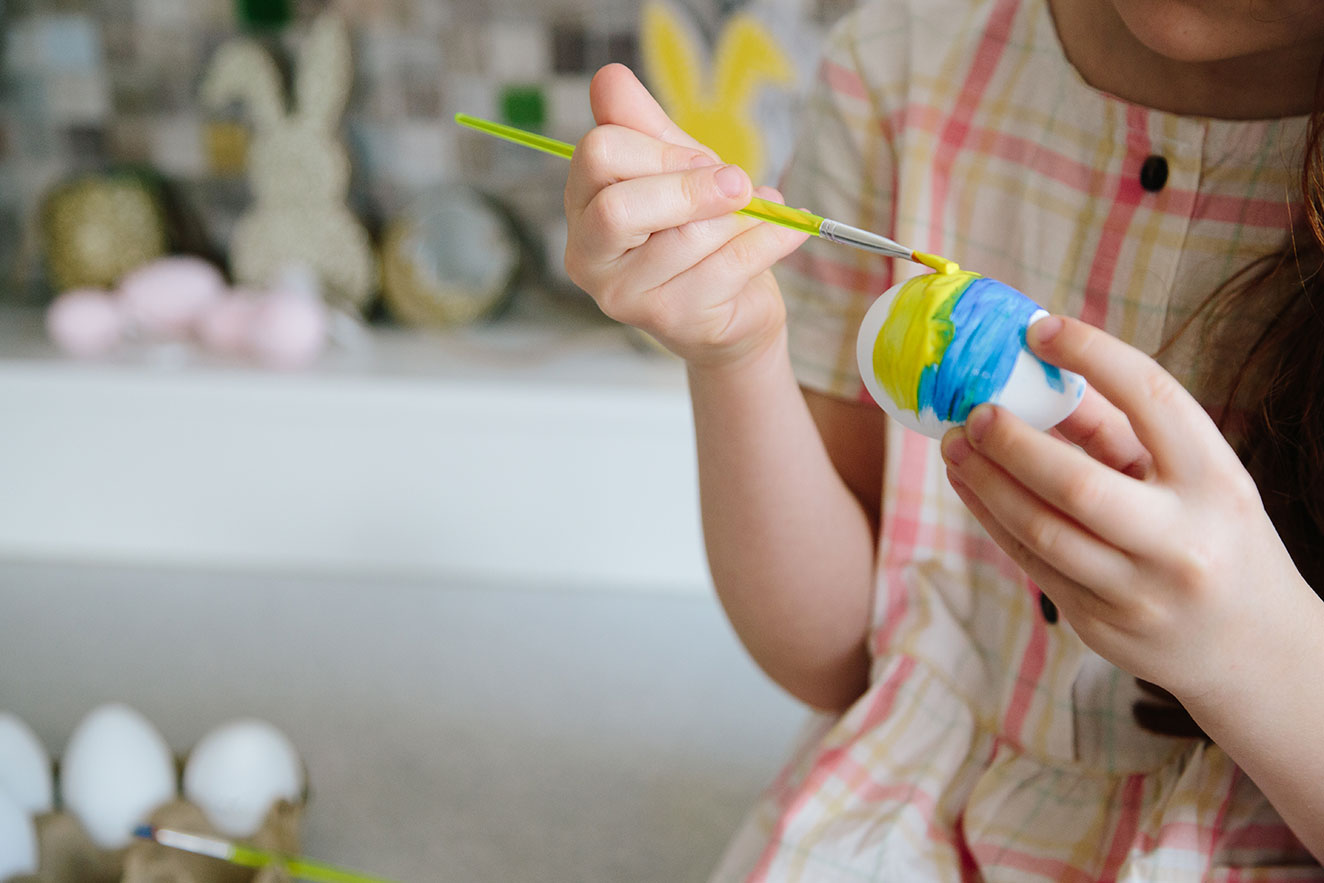
What traditional dishes make it into the Easter basket
The most common practice is to place the basket on the table, surrounded by a smaller or larger family, each choosing what they prefer, in a sort of buffet. Naturally, after a small ritual involving the head of the family handing out eggs from the basket to the others. It is mandatory to include certain foods with symbolic connotations. If there is more than one family at the table, each small group brings a basket.
More recently, other dishes have been served at the table, on pre-made platters, placed on the table, from which everyone serves themselves. The names given below retain their original phonetic form, but are transcribed in the Latin alphabet, which is the form used internationally, in English..
Paska - a dish that lies somewhere at the intersection of bread and Romanian cake. Specifically, some variants are a rather particular kind of bread - round, but less tall in shape, with a holiday bread appearance, with eggs and butter in the dough, but little sugar, with decorations also made of dough. Other variations are closer to the cake, made of sweeter dough, round and very tall, and may contain raisins or, more recently, have sweet icing on top. None contain cheese, like the Romanian version. Sometimes rye bread or other types of bread can be found in the basket alongside the paska. Paska is taken out of the basket and placed in the middle of the table as a symbol of rebirth. The etymology of the word has to do with the concept of 'passage', from earthly to eternal life, but also as a transition from one season to another..
Red eggs and painted eggs - krashanky and pysanky respectively - are similar to the Romanian ones and not absent from the Easter basket. Waxed painted eggs are such an important tradition that since the early 1990s Ukrainians have had a museum dedicated to them. A symbol of integrity, spiritual fulfilment, prosperity - a miniature planet.
Shynka și kovbasa – a slightly smoked Prague-style ham and pork sausages. According to one interpretation, both are meant to symbolically represent the calf that the father of the wandering son in the story sacrifices when he returns home. In other words, a kind of symbol of forgiveness, although beef is not widely used in Ukraine.
Malso și hrudka - butter and fresh cow's cheese. Both are served on bread or with paska and symbolise the bond between Jesus and his followers. In the most traditional version, butter is shaped like a lamb.
Krin - a sauce made of grated and spiced horseradish, plain or mixed with red beetroot. Served with sausages and ham. Its presence, apart from the taste itself, also has ritual value, given the medicinal qualities of horseradish and its digestive properties.
The basket blessed in church includes salt, which keeps away evil spirits, but which, together with the bread, represents a symbolism of welcome and hospitality present in many cultures. In the basket there is also a candle, bringing the light of Resurrection.
Among the dishes that do not get to be blessed in church, but are sometimes served at Easter, depending on the local specifics, the following may be mentioned: kholodetz, a kind of aspic similar to the Romanian one, but usually with a bit more vegetables inside; holubtsi, a kind of meatless stuffed sweet, not pickled, cabbage; varenyky, a kind of coltuns, with a filling of potatoes, mushrooms, onions, between two layers of thin dough; Olivier salad - nothing else than what we call in Romania boeuf salad, which has found its way into all European kitchens in different variations along Russian lines, having been created in Moscow by a Belgian chef.
For traditional meals, including the Easter one, we can also find other pork dishes and - if required - pickled cucumbers and cabbage, beetroot salad. Just as we can also find mashed potatoes or a kind of potato pancakes, by their deruny name. There are also the traditional pancakes, made of wheat or buckwheat flour, called nalysnyky, usually served as dessert, with jam. Also frequently served as a dessert are a cheesecake-like cheese tart called pleskanka, another one with fresh cheese and raisins but with a small layer of dough underneath called syrnyky, or the famous bakba, very similar to the Romanian baked cake.

A light Ukrainian Easter menu
With the traditional menu in mind, we put together a brief menu proposal, which is easy and quick to prepare at home, with the most ingredients at hand. We left out anything time-consuming, more complex recipes and impossible-to-find ingredients. We also took into account complementarity with a typical Romanian menu, in order to avoid including dishes that are very similar to Romanian ones.
Therefore, we chose a few quick dishes to suit the general appetite and a quick dessert: varenyky with potato and cheese filling for starters, chicken Kiev paired with deruny, potato and krin pancakes, beetroot salad with horseradish - as main course, and, for dessert, syrnyky, a cheesecake similar to Romanian pasca, with soft, quick dough instead of leavened dough. The menu is intended for four medium-large portions.
Varenyky
Dough:
- 300 g of flour
- 150 g of milk or water
- 2 tablespoons of oil
- 5 g of salt
- optional, 1 egg
Filling:
- 3-4 potatoes, boiled, then peeled
- 1 onion
- 100 g of grated smoked cheese or other dried cheese
- salt, pepper, oil
The dough is prepared by quickly mixing all the ingredients together and then allowing it to rest for at least half an hour.
In the meantime, sauté the finely chopped onion with a little oil. When it gets translucent, add the grated boiled potatoes and stir. Leave to cool for a few minutes, then add the grated cheese, salt and pepper.
The dough should be rolled out to no more than 3-4 mm thick and cut into a round shape about 7-8 cm in diameter.
Place a spoonful of the mixture in each of the dough discs, fold in half and seal them well using a fork. This will produce crescent-shaped little wedges.
Leave to dry for a few minutes and throw them into a pot of boiling water with a little salt.
When they rise to the surface, take them out and then serve, ideally with a little butter and sour cream, fresh dill or pepper.
Chicken Kiev
- 4 chicken breast fillets (whole breast halves)
- 100 g of butter
- finely chopped green parsley, 1 clove
- 1 garlic clove
- * optional, to bring the recipe up to date, add a few mint leaves and grated lemon zest
- flour, breadcrumbs
- 1-2 eggs
- salt, pepper
- frying oil
By far, the easiest approach is to mix the butter at room temperature with finely chopped parsley and garlic, salt and pepper. Optionally, add a few mint leaves and grated lemon zest. Roll in baking paper until it takes the shape of a cylinder. Put in the freezer until it hardens enough to cut with a knife.
Meantime, remove the skin and any cartilaginous debris from the chicken breast halves. Then, and here's the secret, you have to create some space inside: make a sort of pocket, that's essentially to have the cut at the entrance as small as possible, then widen it as much as possible inside. You need a sharp knife and... caution.
Season the meat with salt and pepper and, when the butter hardens, divide into quarters, then fill each of the pockets inside the fillets.
Next, fry the meat this way (standard procedure): coat the fillets with flour, dip them in stirred eggs, and then in breadcrumbs. The secret is that, while doing this, the cut should remain as closed as possible so the crust that will eventually form will seal it. If convenient, run it once more through the egg and then the breadcrumbs. In this way the final crust will be crispier, but the cut will also be better sealed.
Fry each fillet, one at a time, when the oil begins to bubble, but avoid letting it smoke. Use a nonstick frying pan or try an air fryer.
Cook the fillets until they get crispy, reducing the heat if they brown too quickly. 2-3 minutes per side for each fillet, although you'll get better results if you fry them one at a time or in batches of two, depending on the temperature. Frying them together takes up to 15 minutes in total. It is essential that the heat is adjusted so that the meat is cooked through without burning the surface; the oil temperature should not be allowed to get too low either, as the meat would absorb too much oil.
Drain on paper towels and serve as soon as they are cooked, as hot as possible.
Deruny
- 4 large potatoes, grated
- 1 small onion or 2 green onions
- 1-2 stirred eggs
- chopped fresh dill
- 2 tablespoons of flour
- 1 g of baking soda
- salt, pepper, oil
Quickly mix the grated potatoes with the stirred eggs, flour, finely chopped onion, dill, salt and pepper.
The mixture should be allowed to soak for about 15 minutes, so the flour and starch in the potatoes absorb liquid.
Fry each in a little oil, in a non-stick pan, similar to the usual pancake method. The easiest way to do this is to scoop out the mixture with a spoon. Typically, each pancake requires about 2 tablespoons.
Serve warm, but you can also reheat them.
Krin
- ½ kg of red beetroot, boiled and finely grated
- 2-3 tablespoons of horseradish, grated
- salt, sugar, pepper, vinegar - add a little at a time and stir, to dose to taste
Mix everything together and serve cold. It is best prepared a few days ahead and refrigerated.
Syrnyky
Dough:
- 300 g of flour
- 150 g of butter
- 75 g of sugar
- 1 egg
- 5 g of salt
- 5 g of baking powder
Cheese filling:
- 400 g of fresh cottage cheese
- optionally 2-3 tablespoons of fermented cream
- 3 eggs
- 150 g of sugar
- vanilla extract or lemon zest
- 100 g of raisins, rinsed in water and well drained after
The dough is prepared by mixing all the ingredients together as gently as possible. It is very important that the butter is cold and the sugar is ground; or use powdered sugar instead.
Wrap the dough in plastic wrap then refrigerate.
In the meantime, mix the well-drained cheese with the smoothly stirred eggs, cream, flavourings, sugar and raisins. If it tends to be too soft, add a spoonful of breadcrumbs or semolina.
Spread the cold dough coarsely with a rolling pin and place it in a tray covered with baking paper or butter and flour. You can even use your fingers to spread it into the pan. It is important that the dough is about 1 cm thick and the edge is slightly raised.
Add the thoroughly mixed filling and bake at 200°C for about 40 minutes.
Remove it from the tray when cool and compact.
Before anything else, it would be Christianly mandatory to serve a hearty loaf of bread with salt on the side, to welcome not only the spring, but also the a state of mind that could bring the war to an end, even by a day.








